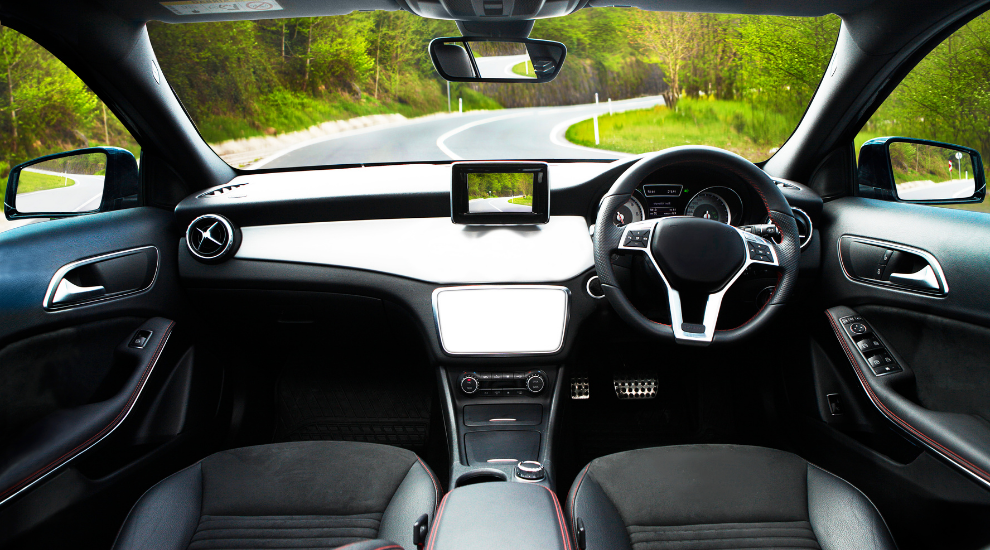Automation tALKS the talk…
…but does it walk the walk? In August 2020, the DfT launched a call for evidence into ALKS – automated lane keeping systems. This offered respondents the opportunity to comment on the benefits, risks and feasibility of ALKS. In the foreword to the call, the Secretary of State for Transport, Grant Shapps, indicates that the UK can use regulatory flexibilities associated with its status as an independent nation to open opportunities for automated vehicles and accelerate our access to the anticipated benefits they may provide. However, taking a leading role in the deployment of automation may bring both known and unknown risks.
ALKS is referred to as a ‘traffic jam chauffeur’ that manages lateral and longitudinal control of an M1 category vehicle within its driven lane and up to 60kph / 37mph. The biggest change that ALKS brings is the potential ability for drivers to disengage from the driving task whilst the system is engaged. However, the driver must always be ready to respond to a ‘transition demand’ – this is when, for a variety of possible reasons, the system requires the driver to resume control. This could be because the system can no longer deliver the dynamic driving task, the vehicle is departing from the operational design domain of ALKS operation, a failure of any software or hardware components relevant to ALKS operation or any of the conditions required for ALKS engagement are no longer met. When a transition demand is issued, the system must provide the driver with (at least) 10 seconds in which to resume control during which escalating multisensory warnings will be triggered to indicate impending disengagement of ALKS and the requirement to resume control. If the driver fails to resume control, a minimum risk manoeuvre (MRM) will be performed in which the vehicle would come to a gentle stop (unless emergency braking was required) in the driven lane with the hazard warning lights on.
Although cars equipped with lane guidance and adaptive cruise control have been available for many years, that ALKS may allow drivers to engage in other tasks is a radical change in the way we understand the process of driving and opens up some significant questions.
Firstly, over responsibility for safe operation of the vehicle. The call for evidence states that when ALKS is active, the driver does not delegate all responsibility for safe driving to the system – highlighting the requirement for drivers to be ready to resume control following a transition demand. With drivers able to attend to other tasks, we need to be confident that they can safely resume control within the 10 second handover window, assimilating all the relevant information about the position and status of their vehicle, that of other actors in the vicinity and any critical information in the environment (e.g. signs, road markings, temporary traffic management features etc.).
Evidence on the time taken for and the quality of drivers’ responses to a transition demand is mixed (see Eriksson & Stanton, 2017). Results are largely based on simulation studies with drivers responding to takeover scenarios of differing urgency, in vehicles travelling at different speeds and using a variety of non-standardised uni- or multimodal (visual, auditory and / or haptic) alerting stimuli. Most studies predict that drivers can resume control comfortably within the 10 seconds period but there are a non-trivial number of individuals and scenarios for which resumption of control takes considerably longer (20+ seconds). We need to understand how often, for whom and in which situations 10 seconds may be insufficient.
Even if we accept that drivers are typically able to resume control within 10 seconds, this still places a considerable demand on the ability of ALKS to control the vehicle safely during this period. If the transition demand is due to the vehicle approaching a junction at which the driver will be required to resume control, the transition process can be managed in a timely and structured manner using triggered alerts based on the car’s speed and position. However, if the transition demand is due to a sudden change in the environment (e.g. unexpected roadworks) or in system capability (e.g. sensor fault), ALKS would need to control the vehicle safely for 167m at 37mph (the current specified speed limit of ALKS) or 313m at 70mph (a possible speed limit for ALKS proposed in the call for evidence). If the driver fails to intervene, the distance covered by the vehicle during the MRM would extend these distances still further. This places a significant demand on the sensors and processing needed to understand when a transition demand may be required in order to give the driver sufficient time to respond, especially when ALKS does not permit the vehicle to change lanes.
The call for evidence highlighted that the performance of any activities other than driving should not preclude the driver’s ability to respond to a transition demand. To have confidence that a driver will be able to respond, ALKS includes driver availability and attentiveness monitoring. However, there is some uncertainty over the efficacy of such systems; firstly, whether camera-based systems observing the driver can perform sufficiently well given the variability of conditions under which they must perform (e.g. lighting, driver position, hairstyles, make-up, clothing, sunglasses etc.) and secondly, whether the measures taken by such systems represent the true readiness of the driver to resume control – not just that they are physically present and observant but also sufficiently cognitively engaged. We need evidence to demonstrate that occupant monitoring systems accurately assess driver readiness, that any warning stimuli keep drivers sufficiently engaged and that drivers cannot find ‘hacks’ or ‘workarounds’ that enable them to push the automation systems beyond an accepted safe performance level.
However, despite these concerns about ALKS, we must also remember that its implementation brings with it a suite of driver assistance systems that may deliver safety benefits that exceed its shortcomings. For example, the autonomous emergency braking, lane guidance, advanced camera systems and blind spot detection systems will help support improved safety in many driving situations. The occupant monitoring systems may help reduce the number and severity of crashes caused by driver fatigue (a contributory factor in up to 20% of road crashes; Jackson, Hilditch, Holmes, Reed, Merat, & Smith, 2011). Further, the ability of the vehicle to perform the MRM means that, in situations in which drivers are genuinely unable to respond (e.g. due to the sudden onset of a physiological condition such as a heart attack), the vehicle is able to make a controlled stop and potentially trigger a response from roads authorities and / or the emergency services.
The question then is whether the potential safety benefits of ALKS outweigh the risks – and so it is vital that we build a robust statistical evidence base to support its introduction. Of course, this is difficult without real world deployment so evidence from alternative sources such as test track trials and simulation studies may be helpful. However, what constitutes a compelling and comprehensive body of evidence on the safety of such systems has yet to be established. Rather than have to wait for the ALKS feature to appear in new vehicles, a possibility for generating data might emerge by using over-the-air (OTA) updates to deliver ALKS functionality in suitably equipped vehicles. This would open the potential for data collection from potentially thousands of vehicles (mostly Tesla vehicles at present). However, it also means that exposure to the risks of this new technology, not yet proven in real-world service, will also increase much more rapidly than is usually the case. This suggests a greater need for close monitoring of ALKS safety and rapid action in the event that unforeseen problems do occur. Of course, the same OTA update process also offers the ability to rapidly fix any problems identified, or even withdraw the feature from vehicles already in-service, if the problem cannot be resolved.
One final point relates to factors that transcend statistics – that of public acceptance and understanding of risk. In relation to public acceptance, it is unclear whether the public will tolerate incidents that are considered to be the fault of a machine as easily as they accept the many thousands of collisions caused by human drivers. By contrast, it is well known that humans tend to be poor at objectively assessing risk – not least in relation to system automation where issues of misuse and misplaced trust have long been understood (Parasuraman & Riley, 1997).
ALKS is a small step along a path to vehicle automation that has been hyped for many years, yet even this small step opens new challenges related to technology, psychology and society. While we await the outcome the consultation, it is vital that we understand the full implications of its use before we allow ALKS to walk the walk.


Recent Comments